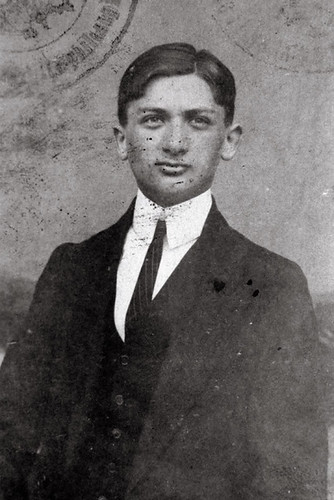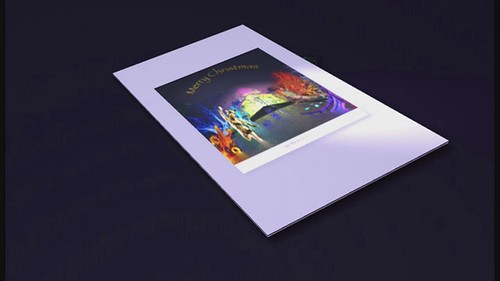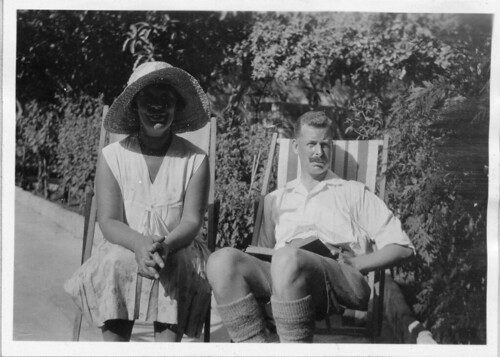Student identity card photo of Joseph Roth
Image by Center for Jewish History, NYC
Description: Student identity card photo of Joseph Roth. Joseph Roth was one of the most prominent Austrian writers of the first half of the 20th century. Radetzky March (1932) and his novel of Jewish life, Job (1930) are among his best-known works.
Creator/Photographer: unknown
Medium: black-and-white reproduction
Date: circa 1914
Persistent URL: digital.cjh.org/R/?func=dbin-jump-full&object_id=862903
Repository: Leo Baeck Institute
Parent Collection: Joseph Roth Collection
Call Number: AR 1764
Rights Information: No known copyright restrictions; may be subject to third party rights. For more copyright information, click here.
See more information about this image and others at CJH Digital Collections.
Syon Park Enchanted Woodland Christmas Pop-Up Card / e-Card Video
Image by Dominic's pics
Duration: 23 secs.
Card may pop-up more smoothly on YouTube or Vimeo.
Now in 3D anaglyph ("two colour glasses") versions:
Red/Green-Cyan Colour
Red/Green-Cyan Monochrome
Amber-Yellow/Blue Color
Amber-Yellow/Blue Monochrome
For a few evenings each winter the private gardens and woods of Syon House are transformed with coloured light...
A 3D video montage (see full credit details at the foot of this description and in the first comment).
Many more excellent photos - also by other flickr contributors - can also be seen presented here:
Syon Park Enchanted Woodland (Gallery 1 of 2).
Syon Park Enchanted Woodland (Gallery 2 of 2).
Originally the site of a medieval abbey, Syon was named after Mount Zion in the Holy Land.
For about the last 400 years it has been the London ancestral home of the Duke of Northumberland.
See also:
Syon Park Interactive Panorama
[360 Cities - Use the mouse to "pan and tilt" and "peer around"]
Syon Park Panoramas Search
[360 Cities - List of all the Interactive Panoramas for the Park]
Syon Park
[Official Website]
Syon Park Enchanted Woodland
[Woodland Official Website and Gallery]
Syon House and Park
[Wikipedia]
The "mechanics" of the card is the standard v-fold mechanism. CGI-ists should note that (although not obvious) the v-folds do not rise from the card in linear proportion to the rate at which the card is opened. I calculated/positioned the card at a number of "keyframe" positions between open and closed, and then smoothed the angle rotation tangents. The result looks convincing, although it is not wholly accurate.
Using angles that each range between 0° and 90° - as the card moves from closed to open, and as the v-folds move from flat to upright - the relationship between the angles is:
tan A = tan B /√2 - (when the upright "spread" of the v-fold is 90°)
- but I wasn't smart enough to program this into my CGI package automatically. Without taking into account this relationship, however, the two halves of the pop-ups do not exactly meet except when fully closed and open.
The images contained in the card are used under Creative Commons licenses. Certain usage is prohibited by some creators, except by specific permission. It's complicated.The copywrite holders are listed in the comments section below, together with links to the individual images which each have licensing details.
Annie Barbara Clark Callow with E.H. Callow
Image by Smithsonian Institution
Description: This photograph from a 1932 handmade New Year's greeting card shows nutritionist Annie Barbara Clark Callow with her husband, the physicist E.H. Callow, who worked at the Low Temperature Research Station and the Department of Scientific and Industrial Research, Cambridge University.
Creator/Photographer: Unidentified photographer
Medium: Black and white photographic print
Date: 1932
Persistent URL: http://photography.si.edu/SearchImage.aspx?id=5807
Repository: Smithsonian Institution Archives
Collection: Accession 90-105: Science Service Records, 1920s – 1970s - Science Service, now the Society for Science & the Public, was a news organization founded in 1921 to promote the dissemination of scientific and technical information. Although initially intended as a news service, Science Service produced an extensive array of news features, radio programs, motion pictures, phonograph records, and demonstration kits and it also engaged in various educational, translation, and research activities.
Accession number: SIA2008-0266
Raccoon - Procyon lotor
Image by Lynette S.
This is a resized image for the PHYLO project. For those of you that follow my stream here is their explanation:
Why are we doing this?
Well, it was conservationist Andrew Balmford's letter (Why Conservationists Should Heed Pokemon, Science. 2002 Mar 29;295(5564):2367.), published in Science, that provided the proverbial kick in the pants. Essentially, he did this eye opening study to show that children as young as eight had the remarkable ability to identify and characterize upwards of 120 different Pokemon characters. However, when the same rubric was applied using photos of “real” flora and fauna (animals and plants that lived in the children's back yards) the results were simply horrendous.
“Our findings carry two messages for conservationists. First, young children clearly have tremendous capacity for learning about creatures (whether natural or man-made), being able to at age 8 to identify nearly 80% of a sample drawn from 150 synthetic “species.” Second, it appears that conservationists are doing less well than the creators of Pokemon at inspiring interest in their subjects: During their primary school years, children apparently learn far more about Pokemon than about their native wildlife and enter secondary school being able to name less than 50% of common wildlife types. Evidence from elsewhere links loss of knowledge about the natural world to growing isolation from it. People care about what they know. With the world's urban population rising by 160,000 people daily, conservationists need to reestablish children's links with nature if they are to win over the hearts and minds of the next generation.”
In effect, Andrew asked, “Can we do whatever Pokemon does so well, but with the reality of biodiversity and ecology providing the content?” With this brilliant seed of an idea, the folks behind the SCQ have been wondering whether the ideals of this thing called “WEB 2.0” can work towards Andrew's suggestion. And with his blessing, we are now ready to pursue his idea full heartedly, optimistic that the good old internet, its social networking ability, and its often wonderfully active and engaged citizens will deliver something amazing.
No comments:
Post a Comment